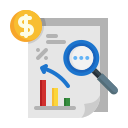Chosen theme: “6. Visualizing Economic Data for Growth Analysis”. Explore how clear visuals transform raw indicators into meaningful growth narratives that inform policy, strategy, and everyday choices. Read, comment with your favorite visual examples, and subscribe to receive fresh, practical ideas each week.

From Fog to Focus
A spreadsheet of quarterly GDP tells you everything and nothing. A single annotated line with recessions shaded reveals turning points, momentum, and durability. Visualizing economic data for growth analysis converts noise into signals that busy minds can immediately use.

Cognitive Efficiency Matters
The human brain spots slopes, clusters, and outliers faster than it parses tables. That speed matters when budgets, hiring, or investments hinge on timely insights. Effective visualizing economic data for growth analysis saves time and reduces costly misunderstandings.

A City Hall Anecdote
A planner once replaced a dense PDF with a simple index chart of local tax receipts since 2008. Council members quickly saw how construction recoveries lagged services. Decisions shifted within minutes—proof that visualization can quietly change the policy conversation.



Data Sources and Cleaning that Build Trust
Dependable Sources, Comparable Definitions
Tap World Bank, IMF, OECD, BEA, and FRED for consistent, well-documented series. Align base years and definitions before charting. Visualizing economic data for growth analysis depends on comparability; otherwise you risk telling a beautiful but misleading story.
Deflators, Real Terms, and Per-Capita View
Convert nominal series using appropriate deflators, and consider per-capita perspectives for living standards. State your inflation measure clearly. Visualizing economic data for growth analysis demands clarity about price levels, population shifts, and the difference between size and wellbeing.
Outliers, Missingness, and Rebasing
Winsorize extreme values thoughtfully, mark imputed data, and standardize scales. Index to 100 at a shared baseline to compare countries or sectors. These steps make visualizing economic data for growth analysis both fair and immediately interpretable to broad audiences.

Time, Cycles, and Context in Growth Stories
Shade official recession periods and annotate policy shifts—stimulus, rate hikes, tax changes. Visualizing economic data for growth analysis becomes richer when viewers see how institutions and shocks coincide with growth inflections and recoveries across different segments.


Mapping Growth: Where Expansion Happens
Use rate-based color scales and avoid mixing counts with areas. Provide consistent legends and note data suppressions. Visualizing economic data for growth analysis on maps works best when colors reflect comparable intensities rather than raw size differences.
Mapping Growth: Where Expansion Happens
Consider tile maps or cartograms to reduce area bias and spotlight small but economically vital regions. Visualizing economic data for growth analysis at metro levels can expose clusters where innovation or logistics hubs quietly power national aggregates.
Lead with one KPI, follow with drivers, end with diagnostic views. Add short, plain annotations near peaks or breaks. Visualizing economic data for growth analysis works when the design whispers, not shouts, and decisions feel immediately reachable.
Design Principles for Decision-Ready Dashboards
Adopt colorblind-safe palettes, strong contrast, and sufficient font sizes. Reserve bright hues for emphasis only. When visualizing economic data for growth analysis, accessible design widens your audience and prevents misinterpretations among time-pressed stakeholders.
Design Principles for Decision-Ready Dashboards
Ethics and Pitfalls in Growth Visualization
Start axes at sensible baselines, label log scales clearly, and avoid cherry-picked zooms. Visualizing economic data for growth analysis demands humility: the goal is understanding, not theatrics or vanity metrics that flatter a preferred narrative.

Code, Notebooks, and Pipelines
Use notebooks or scripts to fetch, clean, and visualize data with versioned dependencies. Visualizing economic data for growth analysis stays reliable when every step is documented and rerunnable by colleagues—or by your future self.
Data Dictionaries and Meta Notes
Maintain a simple data dictionary explaining sources, transformations, and caveats. Link methods beneath each chart. This discipline makes visualizing economic data for growth analysis coherent across teams and encourages constructive critique from subscribers.
Version Control and Shareability
Track changes to code and charts, export alt text, and archive key releases. Invite readers to fork examples, share improvements, and subscribe for periodic template updates that accelerate their next growth analysis project.
